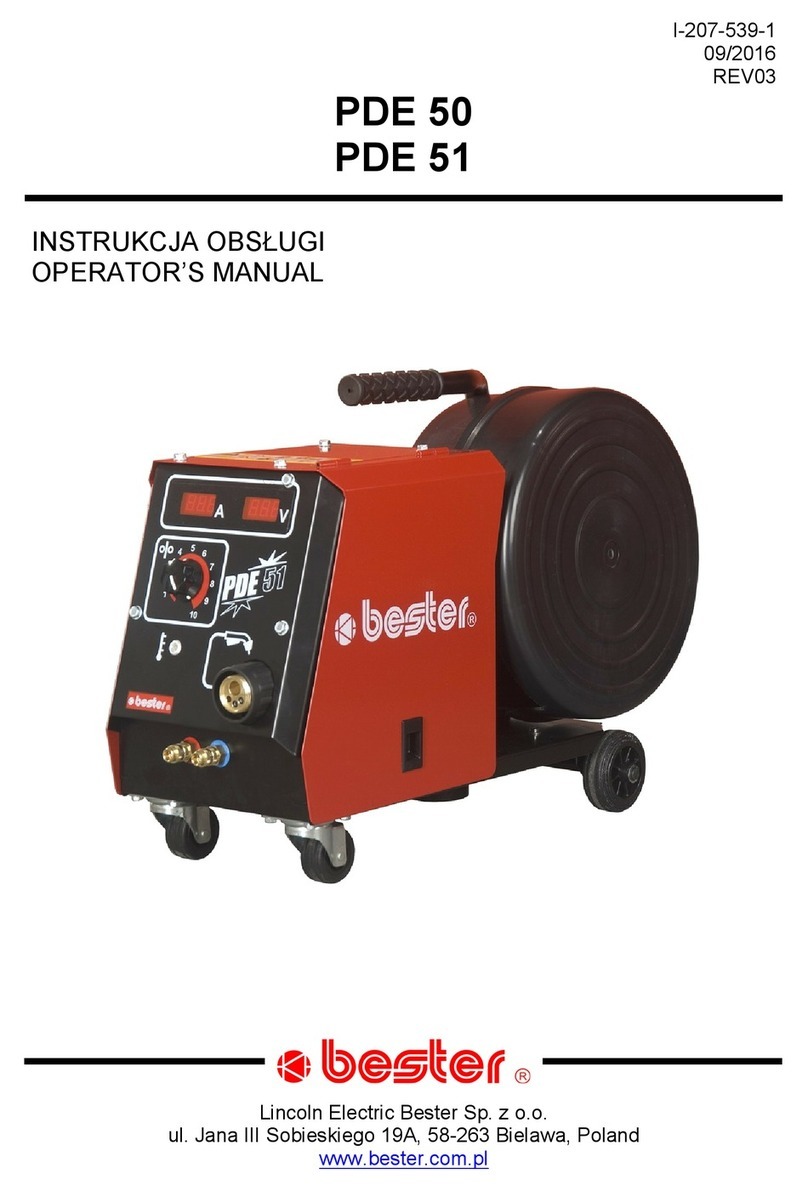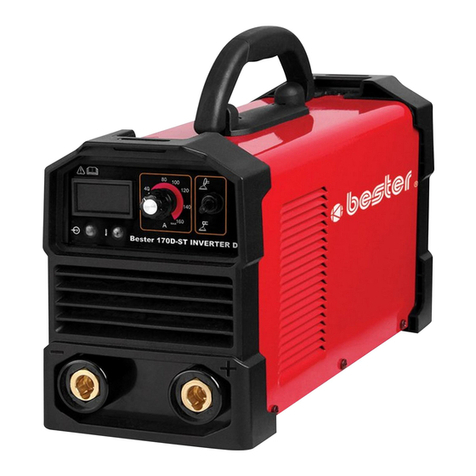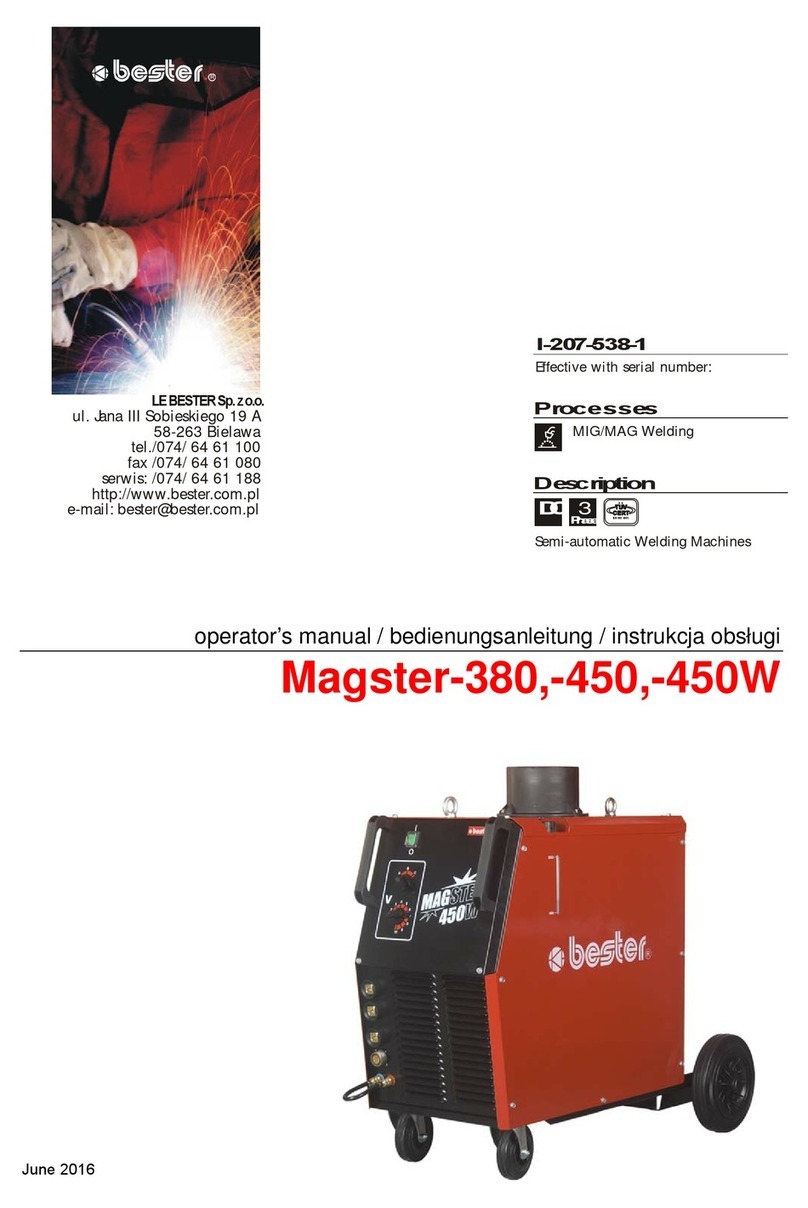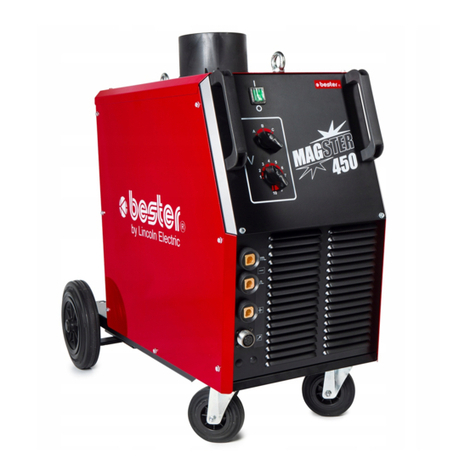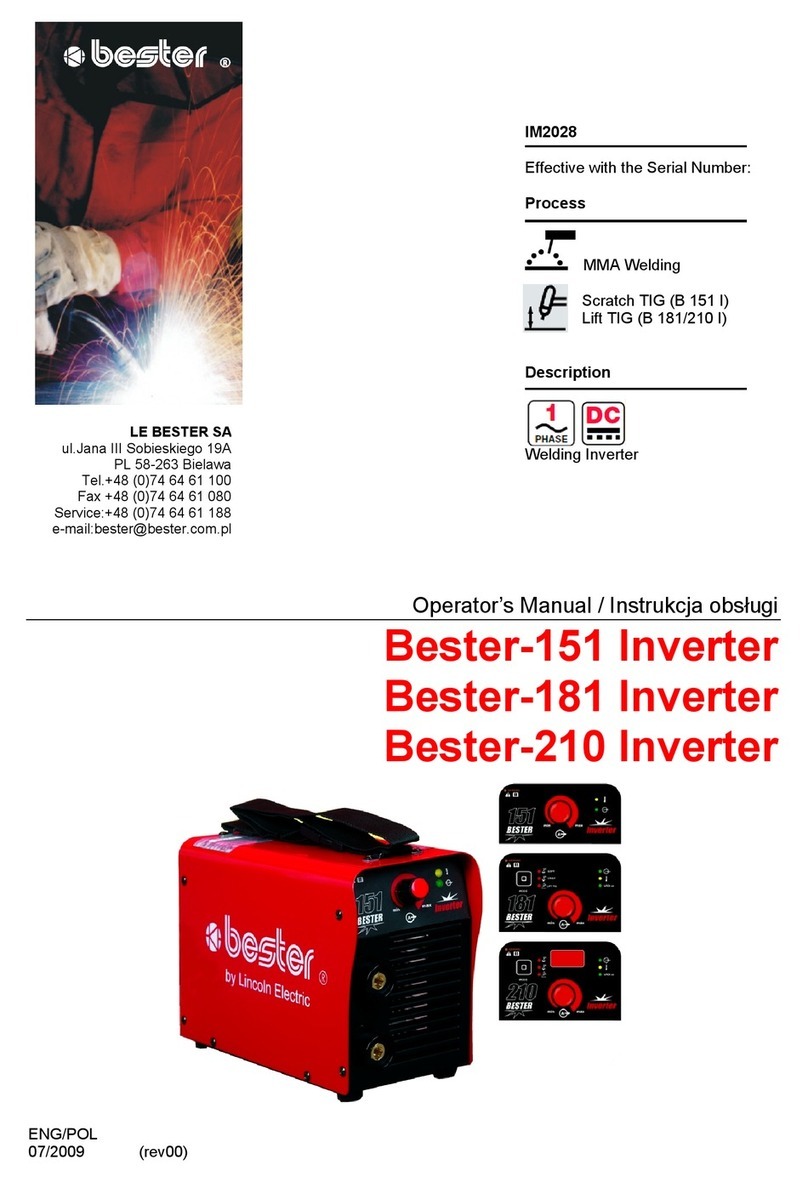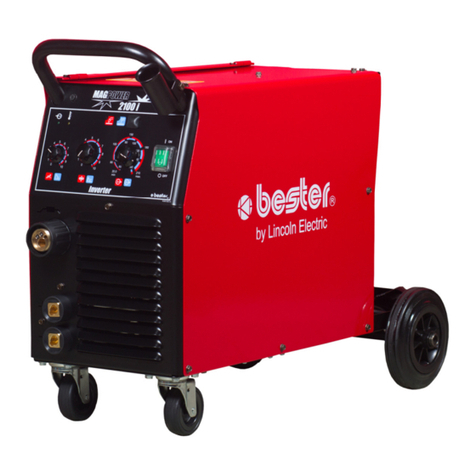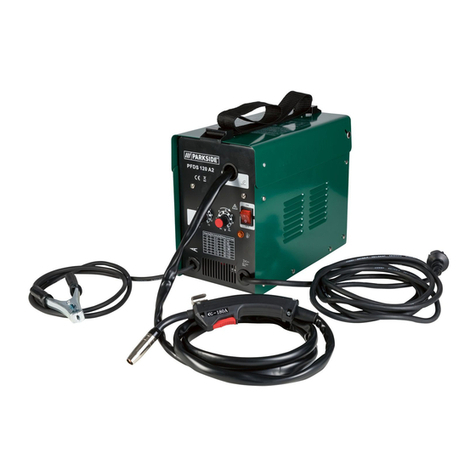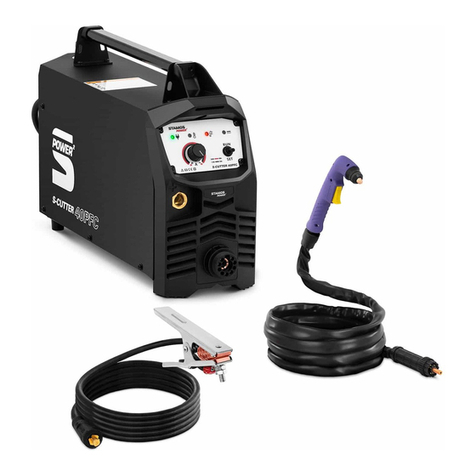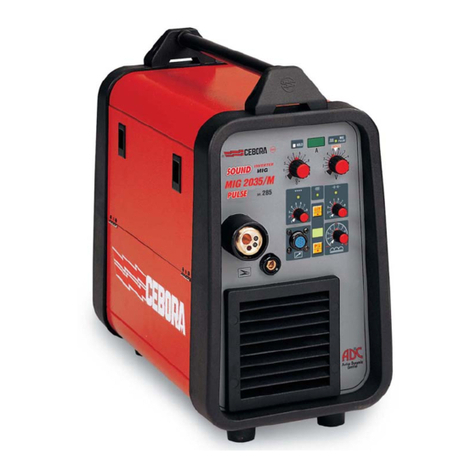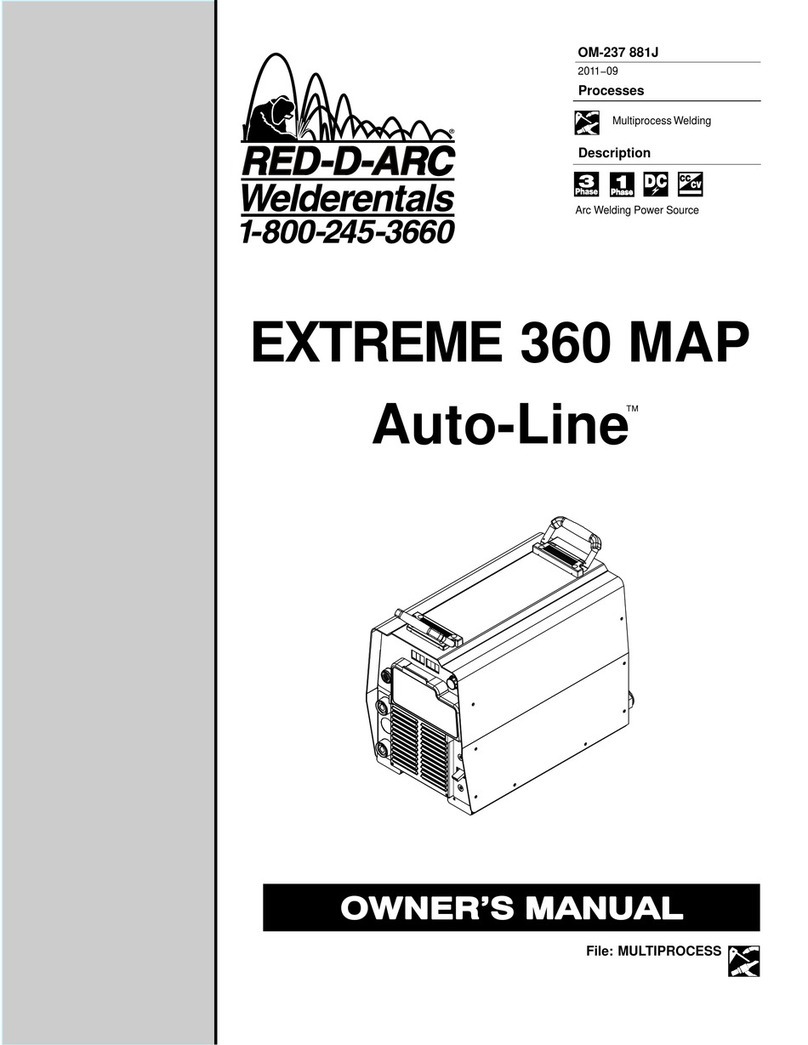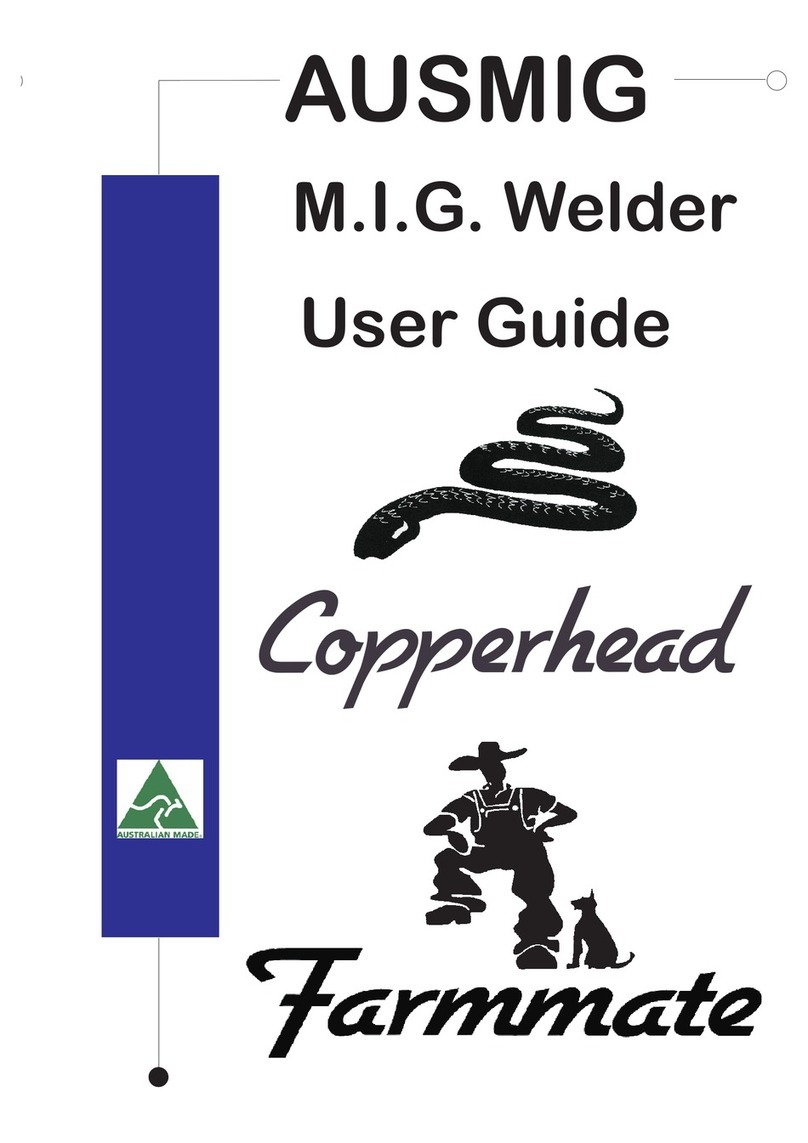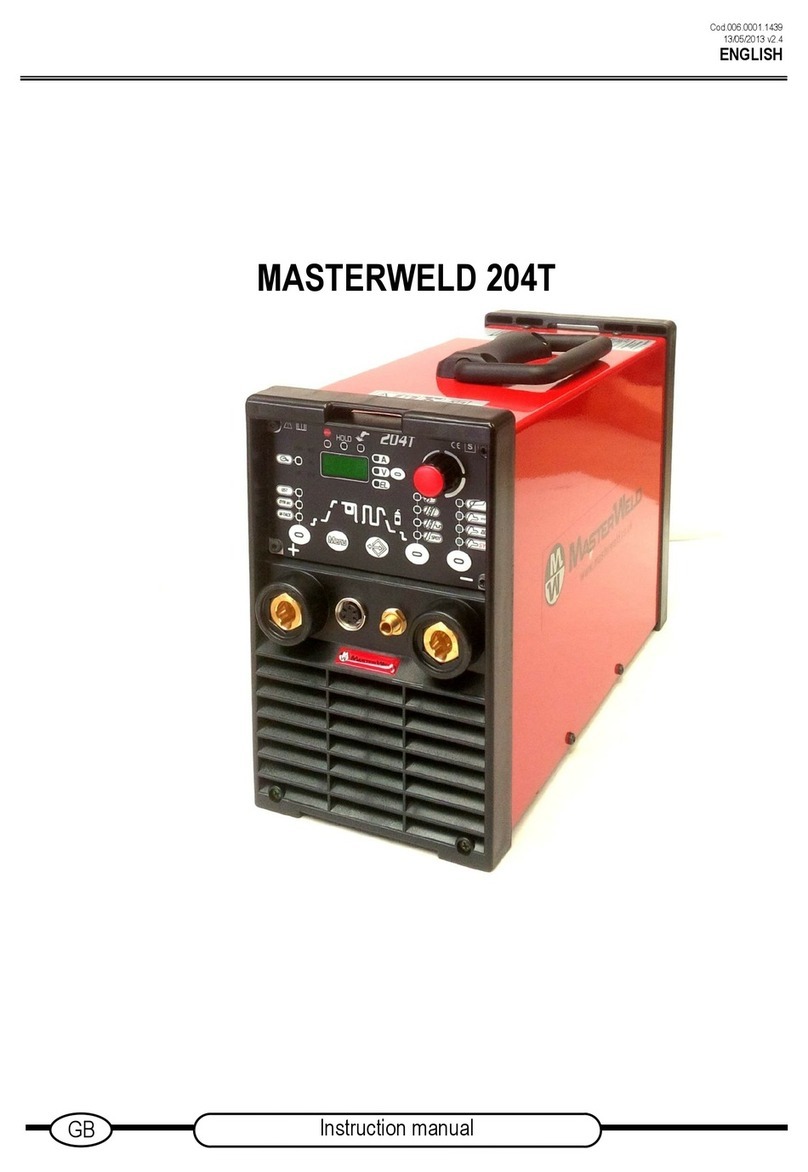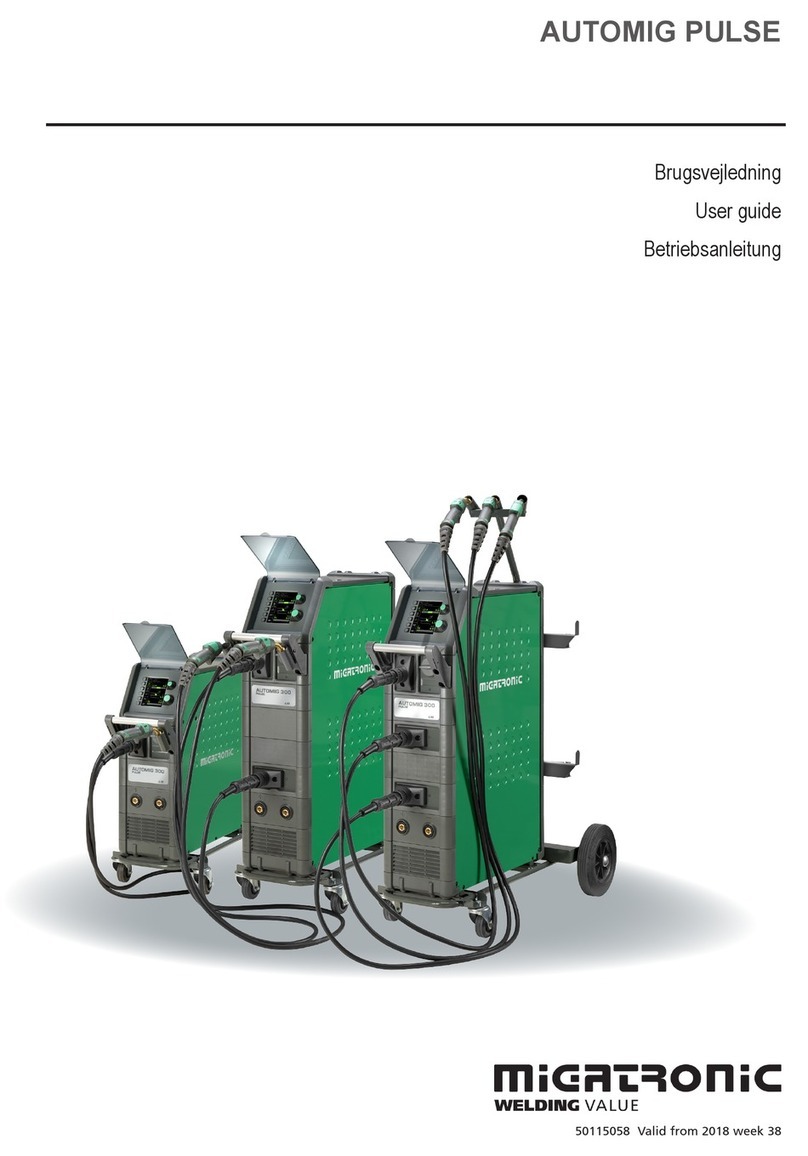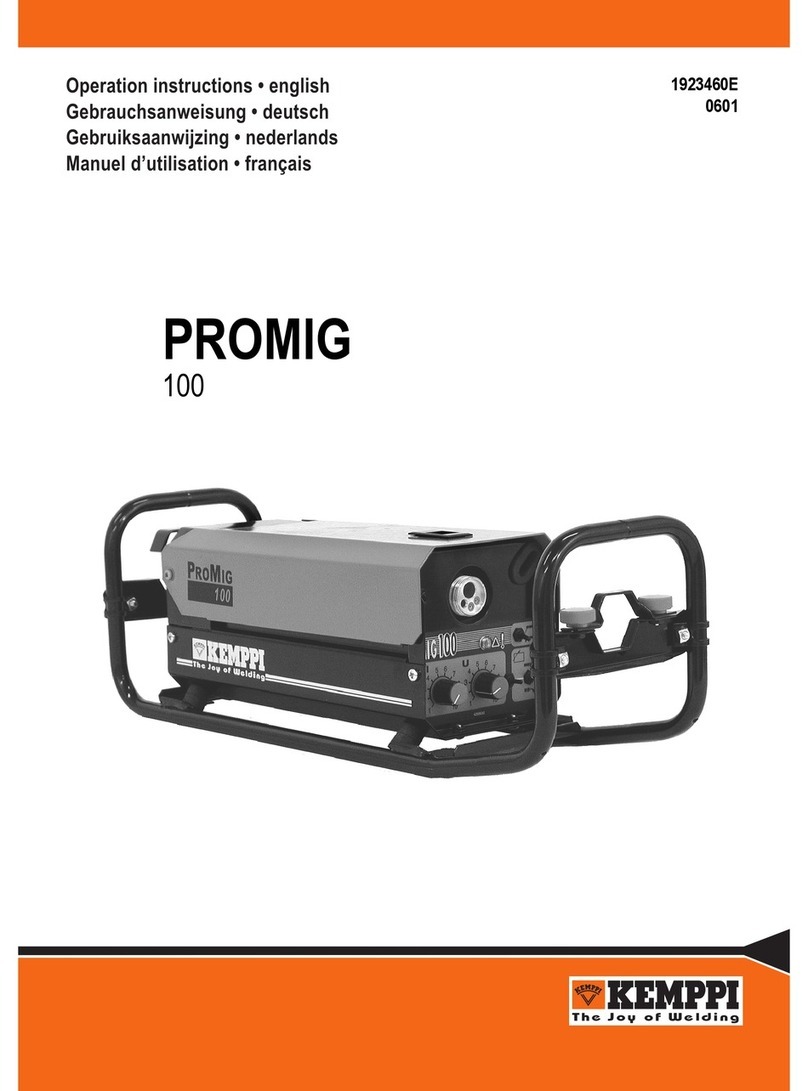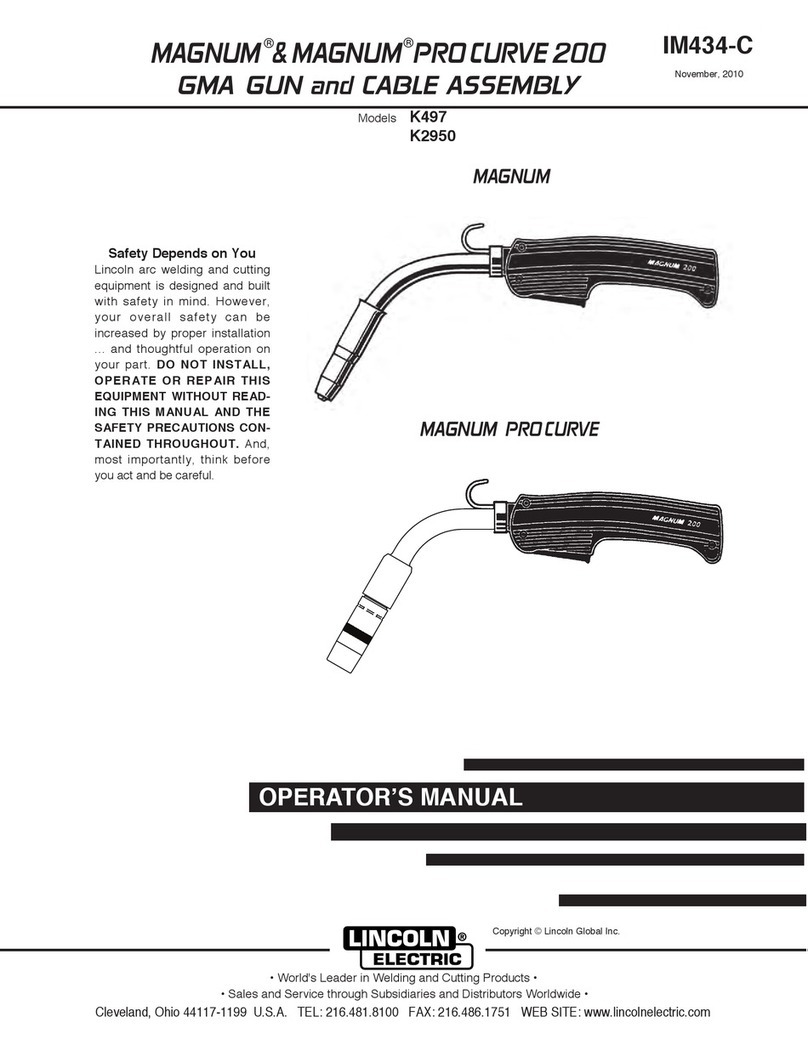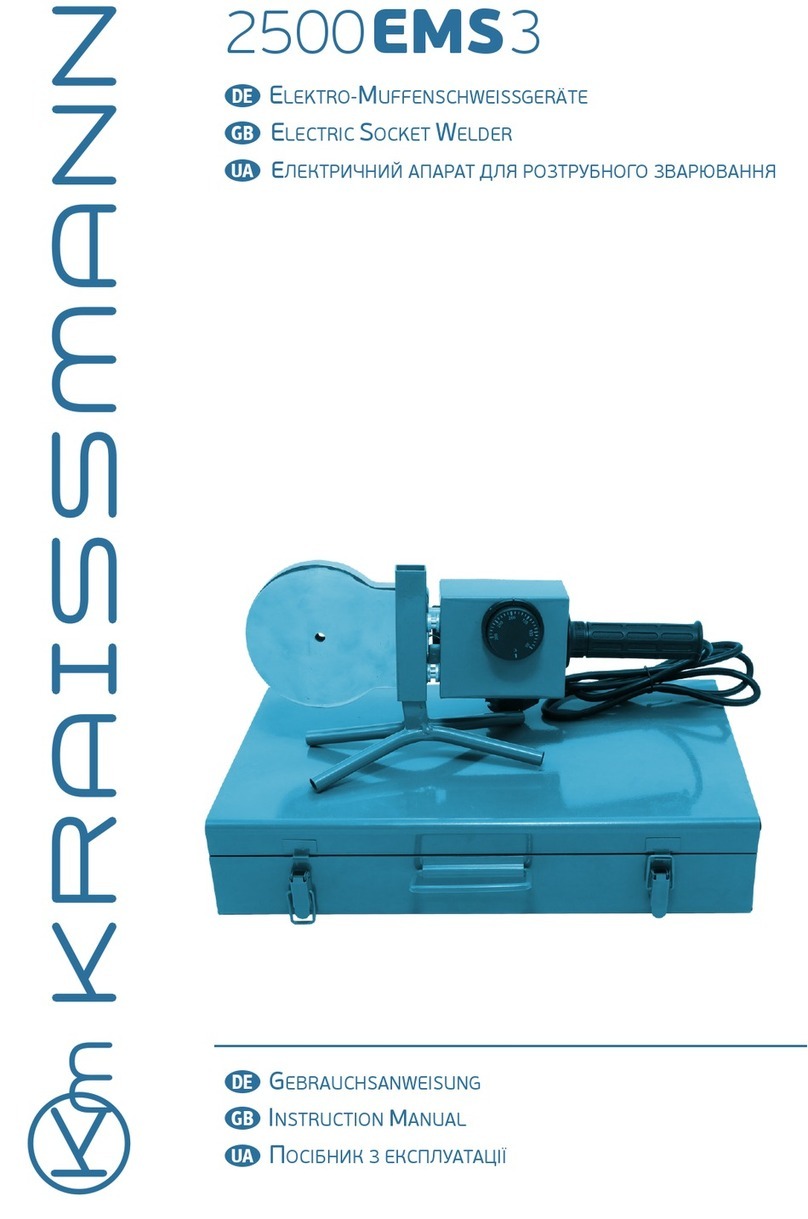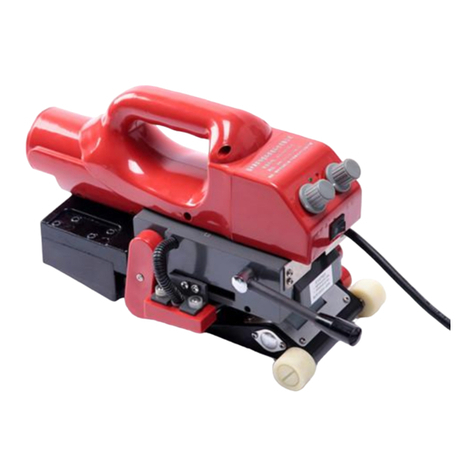Kompatybilność Elektromagnetyczna (EMC)
Urządzenie to zostało zaprojektowane zgodnie ze wszystkimi odnośnymi zaleceniami i normami.
Jednakże może ono wytwarzać zakłócenia elektromagnetyczne, które mogą oddziaływać na inne
systemy takie jak systemy telekomunikacyjne (telefon, odbiornik radiowy lub telewizyjny) lub
systemy zabezpieczeń. Zakłócenia te mogą powodować problemy z zachowaniem wymogów
bezpieczeństwa w odnośnych systemach. Dla wyeliminowania lub zmniejszenia wpływu zakłóceń
elektromagnetycznych wytwarzanych przez to urządzenie należy dokładnie zapoznać się
zaleceniami tego rozdziału.
Urządzenie to zostało zaprojektowane do pracy w obszarze przemysłowym.
Urządzenie to musi być zainstalowane i obsługiwane tak jak to opisano w tej
instrukcji. Jeżeli stwierdzi się wystąpienie jakiekolwiek zakłóceń
elektromagnetycznych obsługujący musi podjąć odpowiednie działania celem ich
eliminacji i w razie potrzeby skorzystać z pomocy Lincoln Electric. Nie dokonywać
żadnych zmian w tym urządzeniu bez pisemnej zgody Lincoln Electric Bester Sp. z o.o. Urządzenie
klasy A nie jest przeznaczone do pracy w gospodarstwach domowych, w których zasilanie jest
dostarczane przez publiczną sieć niskiego napięcia. W takich miejscach mogą wystąpić
potencjalne trudności w zapewnieniu kompatybilności elektromagnetycznej. Urządzenie nie spełnia
normy IEC 61000-3-12. Jeżeli to urządzenie zostanie podłączone do publicznej sieci zasilającej
niskiego napięcia, to użytkownik lub osoba podłączająca urządzenie powinni upewnić się, czy to
jest możliwe, jeżeli to konieczne konsultując się z dostawcą energii.
Przed zainstalowaniem tego urządzenia, obsługujący musi sprawdzić miejsce pracy czy nie
znajdują się tam jakieś urządzenia, które mogłyby działać niepoprawnie z powodu zakłóceń
elektromagnetycznych. Należy wziąć pod uwagę:
Kable wejściowe i wyjściowe, przewody sterujące i przewody telefoniczne, które znajdują się
w, lub w pobliżu miejsca pracy i urządzenia.
Nadajniki i odbiorniki radiowe lub telewizyjne. Komputery lub urządzenia sterowane
komputerowo.
Urządzenia systemów bezpieczeństwa i sterujące stosowane w przemyśle. Sprzęt służący do
pomiarów i kalibracji.
Osobiste urządzenia medyczne takie jak rozruszniki serca czy urządzenia wspomagające
słuch.
Sprawdzić odporność elektromagnetyczną sprzętu pracującego w, lub w miejscu pracy.
Obsługujący musi być pewien, że cały sprzęt w obszarze pracy jest kompatybilny. Może to
wymagać dodatkowych pomiarów.
Wymiary miejsca pracy, które należy brać pod uwagę będą zależały od konfiguracji miejsca
pracy i innych czynników, które mogą mieć miejsce.
Ażeby zmniejszyć emisję promieniowania elektromagnetycznego urządzenia należy wziąć pod
uwagę następujące wskazówki:
Podłączyć urządzenie do sieci zasilającej zgodnie ze wskazówkami tej instrukcji. Jeśli mimo to
pojawią się zakłócenia, może zaistnieć potrzeba przedsięwzięcia dodatkowych zabezpieczeń
takich jak np. filtrowanie napięcia zasilania.
Kable wyjściowe powinny być możliwie krótkie i ułożonym razem, jak najbliżej siebie. Dla
zmniejszenia promieniowania elektromagnetycznego, jeśli to możliwe należy uziemiać miejsce
pracy. Obsługujący musi sprawdzić czy połączenie miejsca pracy z ziemią nie powoduje
żadnych problemów lub nie pogarsza warunków bezpieczeństwa dla obsługi i urządzenia.
Ekranowanie kabli w miejscu pracy może zmniejszyć promieniowanie elektromagnetyczne.
Dla pewnych zastosowań może to okazać się niezbędne.




















